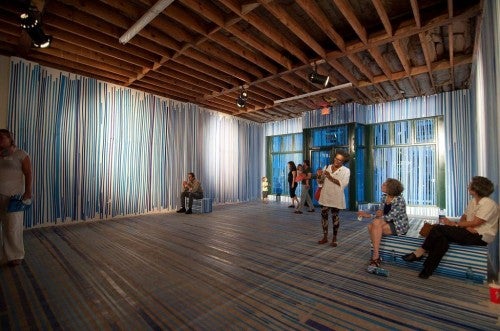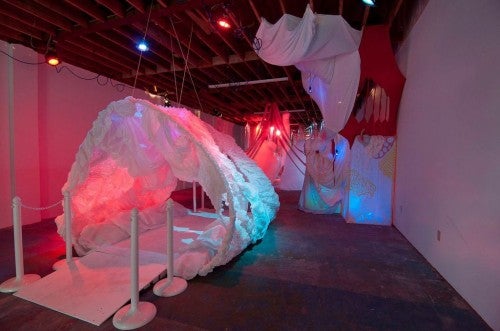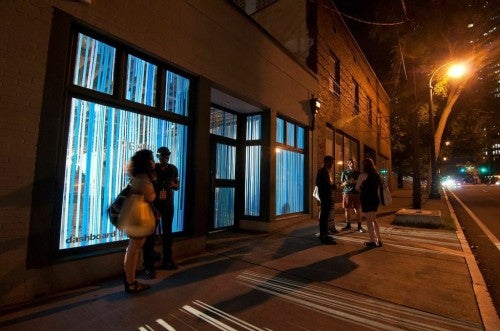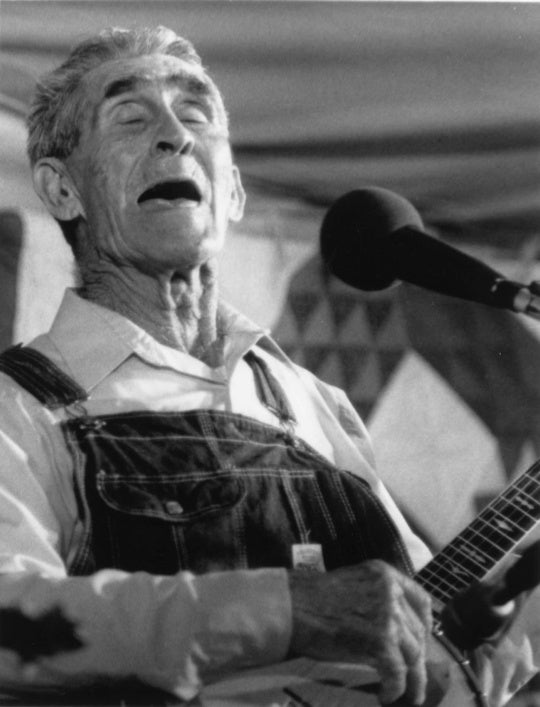
“Nexus, Sexus, Plexus” offers three complimentary lines of sight: a glance back over the recent history of Atlanta art institutions, an inward look at the landscapes of dreams and the body, and a gaze elevated towards new horizons.
This is Dashboard Co-op’s inaugural exhibition in the three buildings at the intersection of North Avenue and Spring Street that they will be occupying for the next year. The exhibition takes its title from the three books of Henry Miller’s loosely autobiographical The Rosy Crucifixion. While there are hints of thematic overlap between the text and artworks, little of Miller’s specific content makes its way into the exhibition. This is all to the good. Miller’s syncretic interest in mystical traditions and astrology and his Romantic devotion to sexual and artistic self-discovery are perhaps still worth exploring. His joy in depicting the degradation of women and his charmless male narcissism are appalling relics that have aged badly.

“Nexus” (31 North Ave.) is a retrospective, bringing together three artists, all of whom have previously shown at the former Nexus Contemporary Art Center, now the Atlanta Contemporary Art Center (the transition is chronicled here). The artists are Susan Loftin, a participant in the First Atlanta Biennale in 1984; John Salvest, who was in “Multiples” in 1990; and William Downs, from the 1999 Nexus Biennial. Regional art historical memory is often short, with artists, spaces, organizations, and movements flaring into consciousness for a moment and then vanishing. Sketchy and poorly archived documentation helps ensure that community amnesia is the norm. “Nexus” counteracts this tendency and establishes continuity between the longer-established Art Center and the younger Dashboard.
For Line Drawing (2014), Loftin covered the windows, walls, and floor of the first third of the gallery space with irregularly spaced vertical stripes of blue tape. This has clear echoes of Ellsworth Kelly and Bridget Riley, but tape is the opposite of the hand-drawn or painted line. As a medium, it naturally lies in a straight line, smoothing out the hand’s irregular contours. Here the lines are laid with a studied lack of care so that they drift from a true vertical orientation, forming unplanned arrangements of bands that overlap and nudge against each other. Viewed empty the piece can appear a bit threadbare, but it is visually effective when filled with people, producing a theatrical effect like a stage caught in swaying motion.

Line, repetition, and transience are equally central to William Downs’s practice, represented here by Drawing inspired from 1999 into 2014 (1999-2014), a monumental collection of drawn and painted works covering the rear walls from ceiling to floor. Downs uses whatever disposable paper is at hand, from small notebooks to folders, envelopes, graph paper, tabbed folders, lottery tickets, invoices, and the pages of a “Rudimentary Chinese Exercise Book,” covering them with rapidly sketched figures in a variety of media. Each piece compresses time down to an instant, stripped of any identifiable thread of action, narrative, or character. This compression is sometimes signaled by monstrously doubled or tripled overlapping figures reminiscent of Ètienne-Jules Marey’s chronophotographs. These sketches are partial, unfinished, and often opaque, hinting at psychological depths while sharing just enough to lure us in. An elegant color field might sit between a childlike watercolor of a house and a surreal wall of scrawled breasts and eyes. Confronted with the sheer unfiltered mass of images, it seems beside the point to pause too long over any one. The on-and-on character of the work mixes the good and the bad indifferently—just like the world itself.
While Downs’s work turns our eyes to our fleeting moods and experiences, Salvest’s Night Train (2002/2014) takes us straight into the dreamer’s bed, where a miniature locomotive bulges under tightly tucked white sheets. The dirty jokes write themselves, of course. But the piece is also sweetly evocative, a reminder of the mysteries of what we become in sleep, when we are hidden even from ourselves. The disappearance of the physical world is signified by the featureless whiteness of the bed and the wall behind it, and in the empty gallery space the locomotive chugs, whistles, and emits fragments of an unintelligible dialogue, its headlight trained on invisible vistas.

The inward gaze turns visceral in “Sexus” (33 North Ave.), which contains the Plastic Aztecs’s installation (an imbecile with a can opener). On stepping through the front door, you stare into a looming white paper-and-wire vaginal canal, complete with an inviting white ramp and handrails, a vision of the pearly gates that feels lifted straight out of Miller’s imagination. The rest of the room contains haphazardly placed organs and tissues sculpted from paper, wire, plastic, and fabric, dominated by a pair of enormous inflated lungs. At the room’s head hang long strips of reflective sheeting that fracture the viewer into a host of crumpled, disposable bodies.
At its best, this has the whimsical feeling of an anatomy lesson conducted by Claes Oldenburg. The giant cross-section of skin with its grotesque embedded hairs is a wonderfully comic horror. But the work is also less alive than Mariana Manhães’s similar body installation Mas (vasos de vidro branco), which trades the literal depiction of inner structures for uncanny abstractions. More importantly, a work that so self-consciously references the carnal preoccupations of Miller’s novels is obliged to engage much more critically with their denial of female subjectivity. Instead, the anonymous, disassembled female body is equated with a funhouse, which only reinforces Miller’s view of women as parts lacking any coherent identity.

Jason Peters’s Plexus, housed in the section of the same name (621 Spring St.), is a large-scale installation that takes full advantage of the space’s 50-foot ceilings. Peters often uses household or premade objects; here, metal chair frames bound into clusters are secured to each other with long lengths of reflective cordage and suspended from the ceiling. Degrees of interconnectedness are central to the work: the tightly clenched physical contact of the chairs within each cluster contrasts with the more subtle pull that the clusters exert on their distant neighbors. Viewed at night under black lights, the chair clusters shine like coral or the bones of a vast organism. It is hard to resist the immersive, gravity-defying elegance of the construction as it draws your eyes upwards and your head ever-so-slightly back. Peters’s work elevates our expectations for where Dashboard will set their sights next.
“Nexus, Sexus, Plexus” is on view at Dashboard Co-Op through August 1 at 31 North Ave., 33 North Ave., and 621 Spring St.
Dan Weiskopf is an associate professor of philosophy and an associate faculty member in the Neuroscience Institute at Georgia State University. He is the author, with Fred Adams, of An Introduction to the Philosophy of Psychology, forthcoming from Cambridge University Press.




